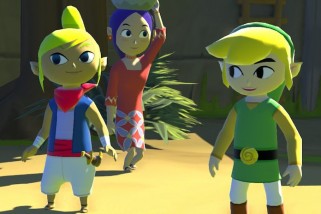BreakingModern — Benjamin Franklin famously said, “In this world nothing can be said to be certain, except death and taxes.” I would add advertising to that brief list — in between dying, growing up and paying your taxes, you’re going to see some ads. There’s just no way around it.
As a millennial, the reality is that I don’t want to see your ad. But the world needs to show it to me. But, you see, I really, really would prefer if they didn’t. In comes native advertising, swooping like a too-friendly hawk to pawn off seemingly awesome gadgets and brands, hoping I don’t notice.
Re-defining the Ad Space
The landscape of advertising has changed tremendously over the years (while death and taxes have not). The iconic campaigns of the ’50s and ’60s — glorified by Mad Men — gave rise to the bold era of TV and print advertising. This method reimagines (or invents) a slogan, ideology or appearance for a brand and beams that concept to millions of consumers across the U.S. and the world. It’s intrusive and aims to convert the masses in one-to-30 seconds. Think of “The Marlboro Man” or Volkswagen’s “Think Small” or even Apple’s “1984.”
But that’s old news.
With the rise of the Internet, globally connected citizens and loud social channels, we have entered fully into the era of Native Advertising. Native advertising, also termed as “native content,” is “A form of paid media where the ad experience follows the natural form and function of the user experience in which it is placed.”
That’s a stodgy definition, but I chose it because of how open and inclusive the language really is. There are countless sub-species, but for me, any ad that is made to fit into its environment, naturally, as if it had always been there, is the heart of native advertising. This concept isn’t new — how long have athletes chugged Gatorade on the sidelines?
Is it the Answer? Definitely Not.
What’s new is us, the millennials. We’re here, and after a literal lifetime (and many lifetimes before us) of bulky, annoying advertisements we just don’t respond the way our parents and grandparents did. Erin McPherson, CCO of Maker Studios, said “This generation doesn’t dislike brands … What they don’t like is advertising.”
Maker Studios claims nearly 11 billion views a month, all from short-form content videos. McPherson chalks this up to “native content,” a process by which content-creators reinforce branding themselves, rather than allow a brand to, say, insert a lame bit into an otherwise cool video.
In one sense, I agree. Branding movements like Clueless Gamer — in which Conan O’Brien reviews videogames before they’ve come out — achieves both hilarity and effective advertising for himself, Microsoft, PlayStation and even the NFL.
Video: Marshawn Lynch and Rob Gronkowski Play “Mortal Kombat X” With Conan O’Brien
But it doesn’t really change my attitude: I’m still as anti-branding as I’ve ever been. The product that is subtly (or not so) included in the content does not suddenly appear miraculous or awesome. The content may be awesome, but it doesn’t extend beyond that. You see, the method of “native” is not enough to negate the advertising — it’s still advertising. The goal is still to reach a large audience who will purchase said product over and over again.
While I prefer it to traditional ads — in which I mute, shut off, exit tab or become irrationally enraged — native advertising shows a slim difference from its overbearing predecessor. But, of course, that doesn’t mean it’s not the future. Stay tuned for Part 2.
For BMod, I’m Daniel Zweier.
Featured/First Image Credit: © Isaxar / Dollar Photo Club
Second Image Credit: “Think Small” by Source. Licensed under Fair use via Wikipedia.











![Madden NFL Mobile [review]](../wp-content/uploads/2015/09/header3-60x60.jpg)

![Call of Juarez: Bound in Blood [review]](../wp-content/uploads/2015/09/HEADER--60x60.jpg)